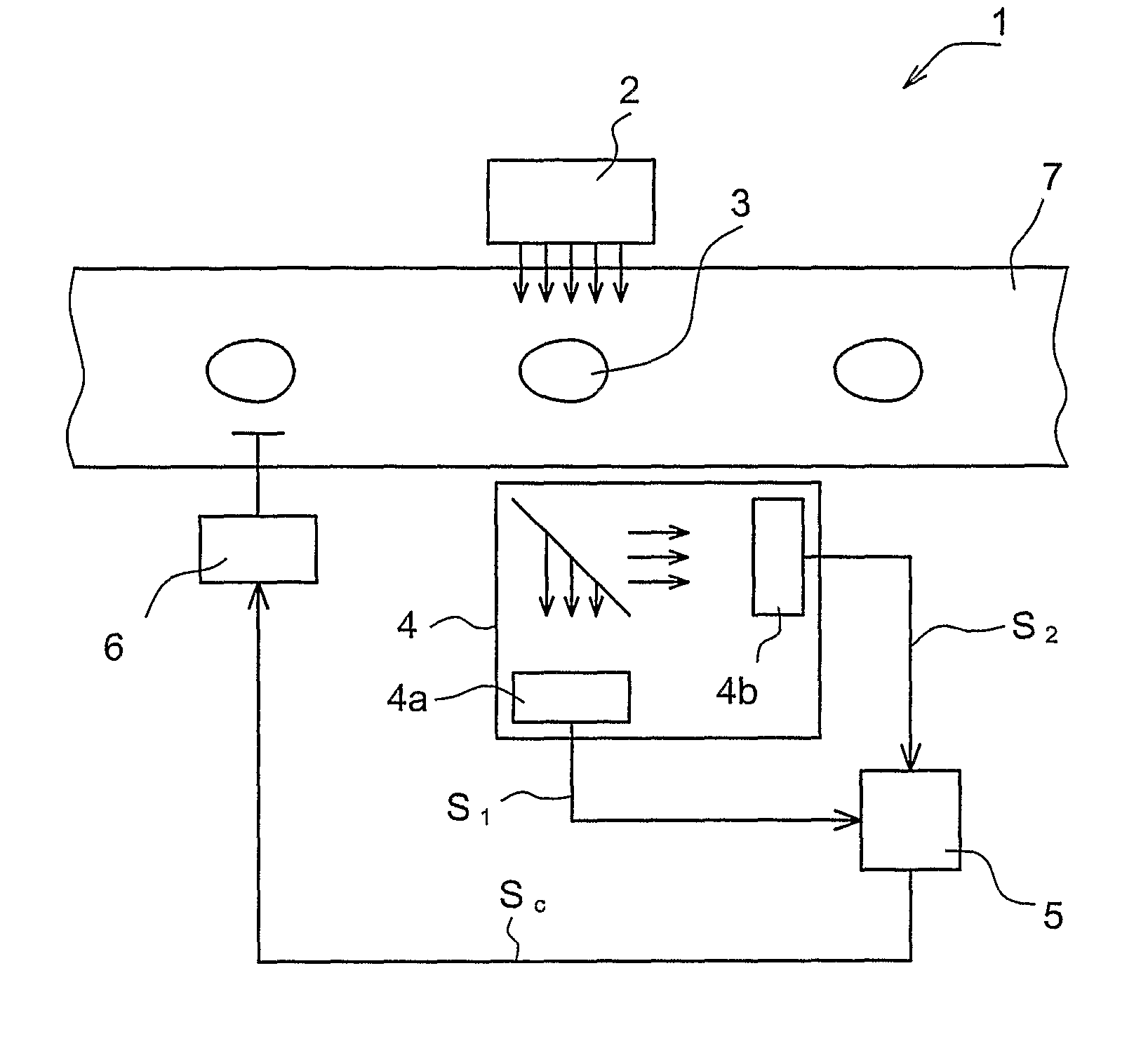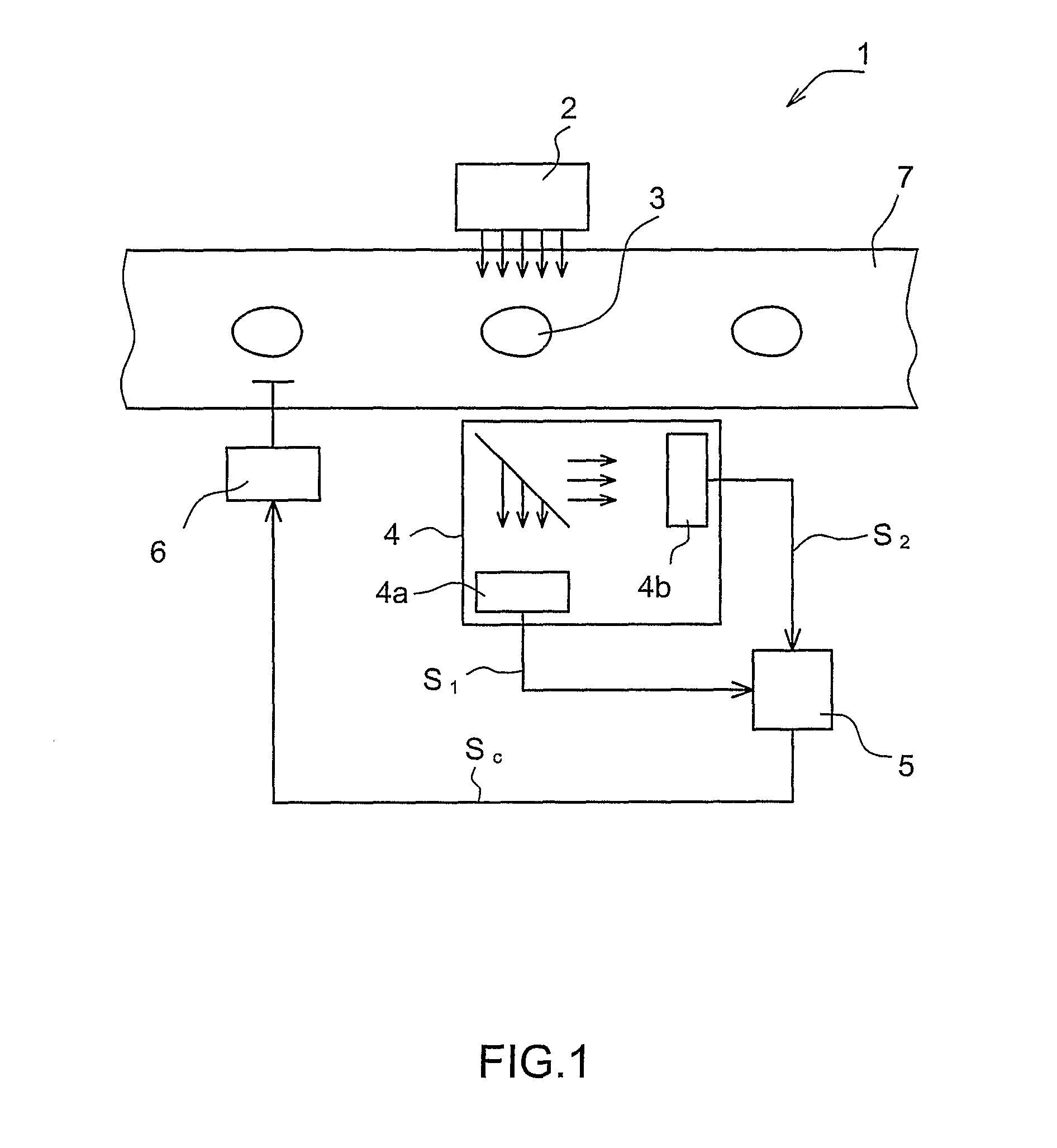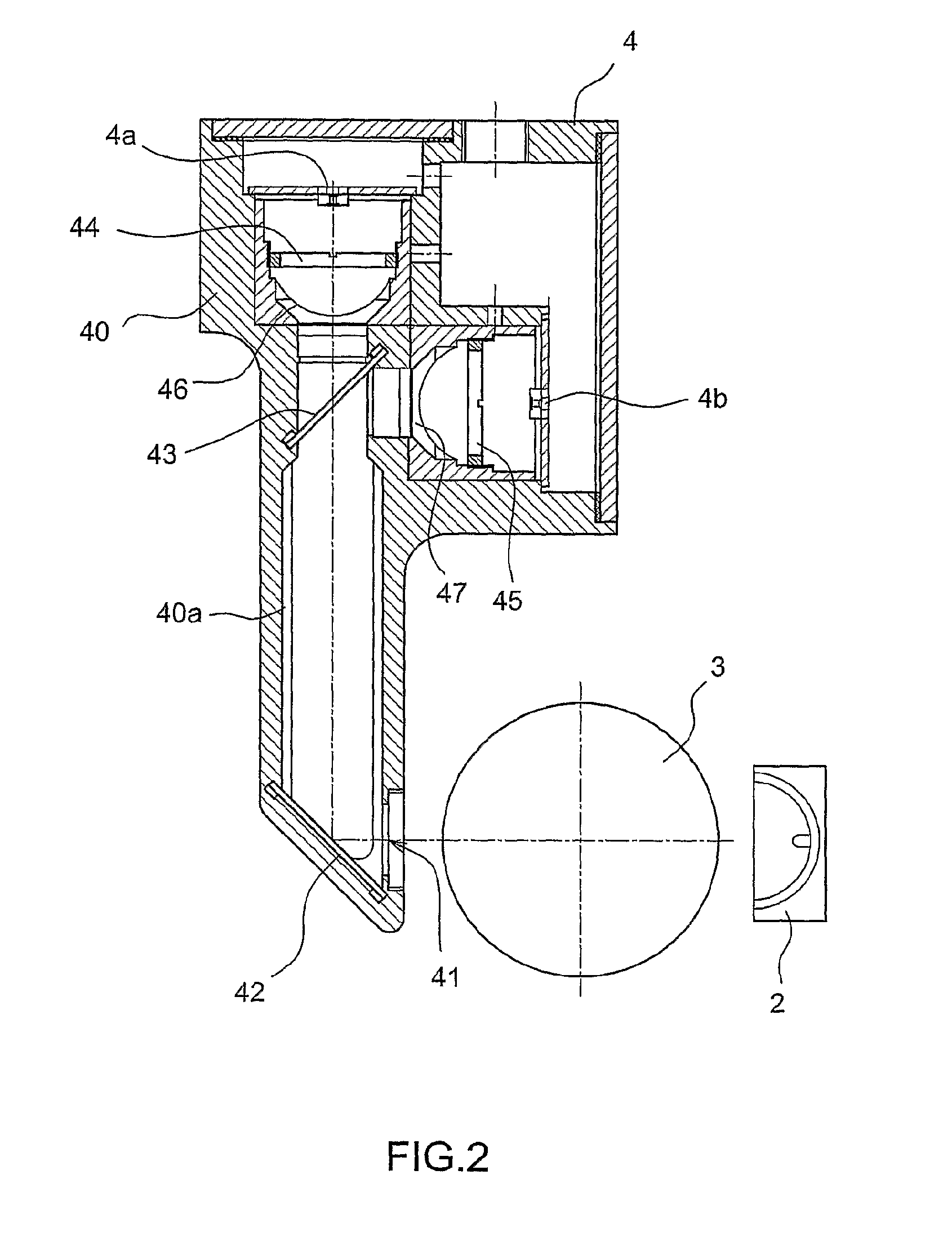Inspection of eggs in the presence of blood
a technology for blood and eggs, applied in the field of blood-inspection devices, can solve the problems of disturbing the ratio between transmitted light energy at the two wavelengths, and achieve the effects of eliminating the effect of the spectrum shift of light, simple manner, and correcting the effect of the variation in the ratio
- Summary
- Abstract
- Description
- Claims
- Application Information
AI Technical Summary
Benefits of technology
Problems solved by technology
Method used
Image
Examples
Embodiment Construction
[0025]FIG. 1 shows a device for inspecting eggs denoted by reference numeral 1. The device 1 comprises an LED 2 (Light Emitting Diode) which serves as a source of light in order to transmit light through an egg 3 placed in front of it. It is also possible to use a group of several LEDs instead of one LED. The eggs are conveyed past the LED 2 one by one by means of a conveyor belt 7 or the like. Detection means 4 have been placed opposite the LED 2, on the other side of the path of the egg 3.
[0026]In the embodiment shown, the detection means 4 comprise optical sensors 4a and 4b which are each sensitive to light of a specific wavelength λ1 and λ2, respectively. Light of a first wavelength λ1 is not selectively absorbed by blood, light of the second wavelength λ2 is. The light emitted by the LED 2 which shines through the egg 3 to be inspected is received by the sensors 4a and 4b and converted into a first signal S1 and a second signal S2 respectively which are representative of the li...
PUM
| Property | Measurement | Unit |
|---|---|---|
| wavelength | aaaaa | aaaaa |
| wavelength | aaaaa | aaaaa |
| wavelength | aaaaa | aaaaa |
Abstract
Description
Claims
Application Information
 Login to View More
Login to View More - R&D
- Intellectual Property
- Life Sciences
- Materials
- Tech Scout
- Unparalleled Data Quality
- Higher Quality Content
- 60% Fewer Hallucinations
Browse by: Latest US Patents, China's latest patents, Technical Efficacy Thesaurus, Application Domain, Technology Topic, Popular Technical Reports.
© 2025 PatSnap. All rights reserved.Legal|Privacy policy|Modern Slavery Act Transparency Statement|Sitemap|About US| Contact US: help@patsnap.com



